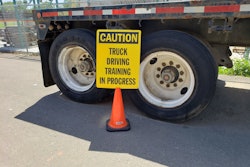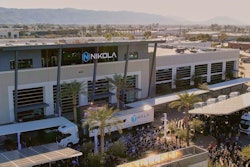I’ve spent a lifetime repeatedly learning that I don’t know everything.
Insatiable curiosity, and a rather diverse career, have led me down some deep rabbit holes. In writing and speaking about hydrogen fuel cell trucks for NACFE I brought up some new challenges the nascent industry and society may not yet fully grasp. Chief among them being that we largely have not yet thought about integrating hydrogen fuel cell trucks into the nation’s transportation network. Simply put, can you legally drive a fuel cell truck everywhere? And that invariably is followed by the question, “Should you be able to drive a fuel cell truck everywhere?”
New technologies like hydrogen, battery electric and autonomous vehicles bring with them unknowns. As we boldly go where no technology has gone before we are likely to need to flesh out some details. Lack of guidance and regulation does not necessarily mean they are not needed.
Turns out that figuring out if hydrogen trucks can and should operate everywhere is a tough question to answer today. According to Colorado regulations, for example, you cannot drive a hazmat commercial vehicle through the Eisenhower Tunnel. In Maryland, it may be illegal to drive a hydrogen powered truck on the Chesapeake Bridge Tunnel. New York and New Jersey have a whole raft of tunnels and bridges with various restrictions. British Columbia ferries have no mention of “hydrogen” per se, but while they permit some gasses, commercial vehicles may not be allowed to transport propane. As I said, I’m not an expert, just a curious researcher with access to web search engines.
According to various Material Data Safety Sheets, (MSDS) and United Nations Committee of Experts on the Transport of Dangerous Goods UN 1049 and the U.S. Department of Transportation Code of Federal Regulations 49 CFR §172, it appears commercial compressed hydrogen is a Hazard Class 2.1 substance described as a flammable gas. That seems clear enough, but does a vehicle operating on hydrogen contain enough hydrogen to be so designated? My guess is that that will have many answers depending on who and where you ask.
Some of the codes I found appear to limit alternative fuel sizes for natural gas and propane. For example, in Maryland the limit is to below 150 lbs. (68 kg) on-board to be a qualified alternative fuel vehicle, but then rules limit tunnel transit tanks to below 10 lbs. (4.5 kg) per container. NACFE’s hydrogen reports highlighted that hydrogen capacity for proposed fuel cell trucks might be 50 to 80 kg (110 lbs. to 176 lbs.) to achieve longer ranges of 350 to 600 or more miles.
The U.S. Federal Motor Carrier Safety Administration (FMCSA) has a map tool showing designated hazmat routes in each state. A brief sampling of states seems to identify a small number of key tunnels and bridges as having hazmat restrictions.
Hydrogen and safety are not new topics. Hydrogen is safely hauled in mass quantities all over the U.S. for industrial uses and has been for decades. In writing this blog, my intent was not to raise fear, only to highlight that the rules and experience are not really in place yet for hydrogen fuel cell vehicles, and there are some questions that probably need to be thought about moving forward.
One of those questions is whether it is safe to power a truck with hydrogen through highway tunnels. This topic, I found, is also not new. A 2020 report from Sandia National Laboratory provides a literature search on the background, analysis and testing of Hydrogen Fuel Cell Vehicles in Tunnels. International industry and regulatory groups have been thinking about this for some years, with a variety of analytical methods and have actually physically tested hydrogen “deflagration” events in various test tunnels.
I will be the first to admit I had to look that term up. One definition I found says that deflagration is, “the action of heating a substance until it burns away rapidly.” It’s a slightly different take on an industry favorite term “thermal event.” That Sandia report also led me to looking up the term “overpressure” that I had not seen in decades since a past life. I can’t attest completely to its accuracy, but Wikipedia seems to do a fair job of describing overpressure in my limited experience. That is a rabbit hole for another day, suffice it to say that it provides a measurable scale for looking at deflagration events in tunnels.
NACFE’s most recent report on hydrogen concludes that it will be part of the messy middle of solutions to provide zero-emission and near-zero-emission replacements for diesel, especially for heavy freight, long distance duty cycles. Experts are looking at where hydrogen powered trucks can travel and can’t travel, and importantly, why and why not. I expect that the evolving rules may be fairly regional, governed by an alphabet soup of various local, state and federal agencies.
I also expect that many of the rules will develop as the result of experience. That is a fundamental aspect of engineering new technologies. We tend to learn much more from failures than successes. Ignorance is not always bliss. It’s often just a lack of experience.












